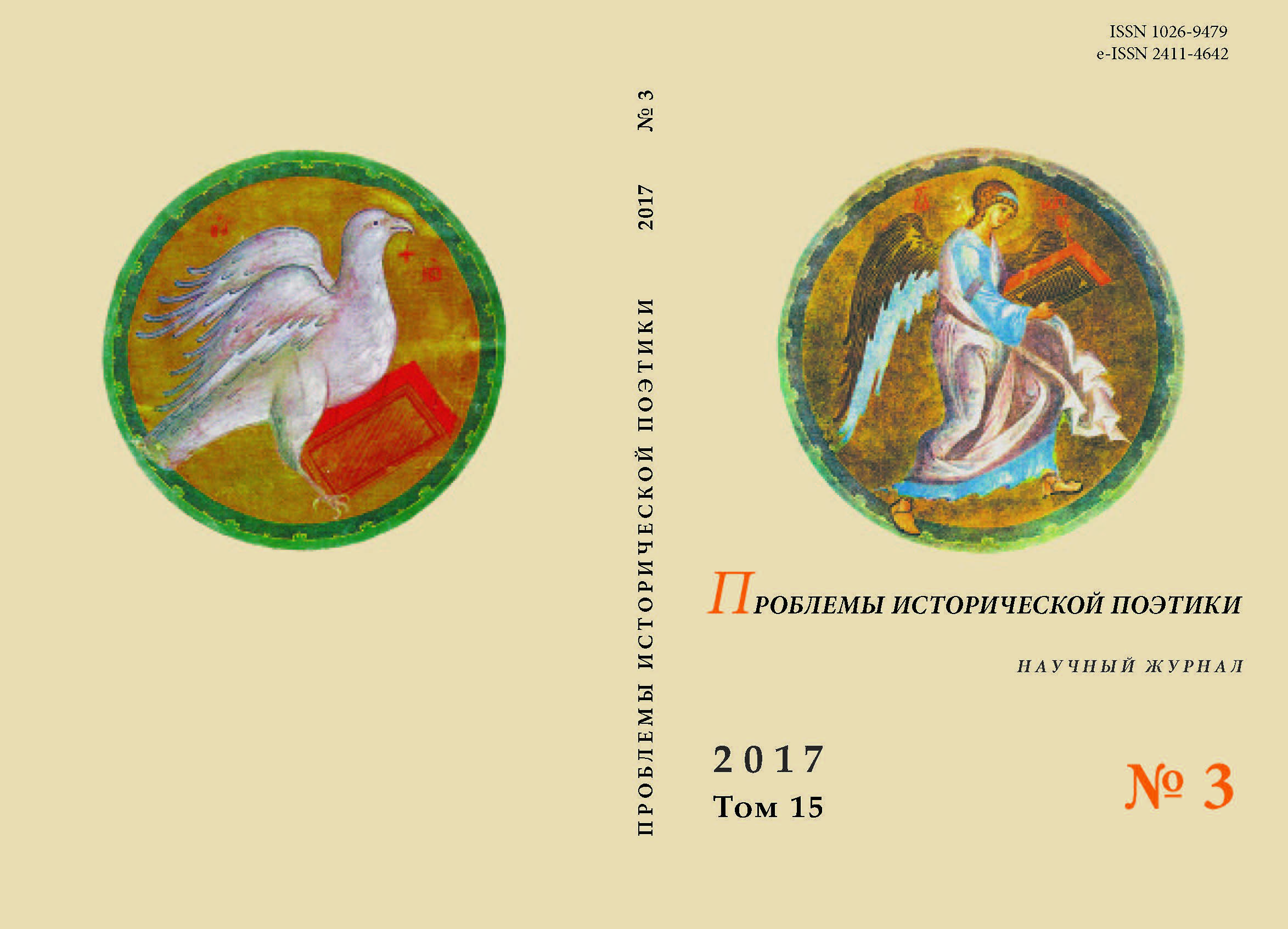АНТРОПОНИМЫ И ЕВАНГЕЛЬСКИЙ ТЕКСТ В РАССКАЗАХ ТОЛСТОГО «ЧЕМ ЛЮДИ ЖИВЫ», «ГДЕ ЛЮБОВЬ, ТАМ И БОГ», «МНОГО ЛИ ЧЕЛОВЕКУ ЗЕМЛИ НУЖНО»
ANTHROPONYMS AND EVANGELICAL TEXT IN TOLSTOY’S STORIES “WHAT MEN LIVE BY”, “WHERE LOVE IS, THERE GOD IS ALSO”, “HOW MUCH LAND DOES A MAN NEED?”
Author(s): Elena MasolovaSubject(s): Language and Literature Studies, Literary Texts, Fiction, Studies of Literature, Russian Literature, Philology
Published by: Петрозаводский государственный университет
Keywords: nameless characters; anthroponym; proper name; рatronymic; evangelical text; discourse strategies; Tolstoy
Summary/Abstract: In Tolstoy’s stories “What Men Live by” and “Where Love Is, There God Is Also” the choice of the anthroponymic naming formula is predetermined by the relation of characters to the Gospel. Anthroponyms determine the destiny of people, have a prospective function and give hope for the favorable safe final of the story. In the story “Where Love Is, There God Is Also” the narrator uses a proper name when his character is not right; a patronymic has a greater value than a proper name because the patronymic naming formula emphasizes the succession of generations as well as a religious and moral essence laid in the name. Tolstoy’s character absorbs the Word Divine and as a result of it he is transformed. The “neutral” impersonal naming formula is replaced by the anthroponymic naming formula with its Christian semantics obtained in baptizing. Semantics of anthroponyms not always “helps” Tolstoy’s characters. In the story “What Men Live by” the semantics of patronymic Trifonov is “empty”: Trifonov is a poor man who did not help Semyon in a difficult situation, which he himself created in part. In the story “How Much Land Does a Man Need?” greedy and cunning Pachom failed to realize the positive semantics of his personal name and died. Tolstoy’s nameless characters are usually separated from God; the exception is a woman with a child from “What Men Live by” and an old wanderer from “Where Love Is, There God Is Also”. Angel’s speech at the end of the story “What Men Live by” and the description of his ascension correlate with the Gospel text. The forms of inclusion of the Gospel text in Tolstoy’s stories are different. A number of stories are preceded by the evangelical epigraphs that create a parabolic composition. In some stories Tolstoy’s character reads and comprehends the evangelical verses; the Gospel text sounds in his speeches and “subdues” the narrative. All this leads to an increase in the meaning of Tolstoy’s “national stories”, written in the context of Christian literature.
Journal: Проблемы исторической поэтики
- Issue Year: 15/2017
- Issue No: 3
- Page Range: 109-126
- Page Count: 27
- Language: English, Russian

